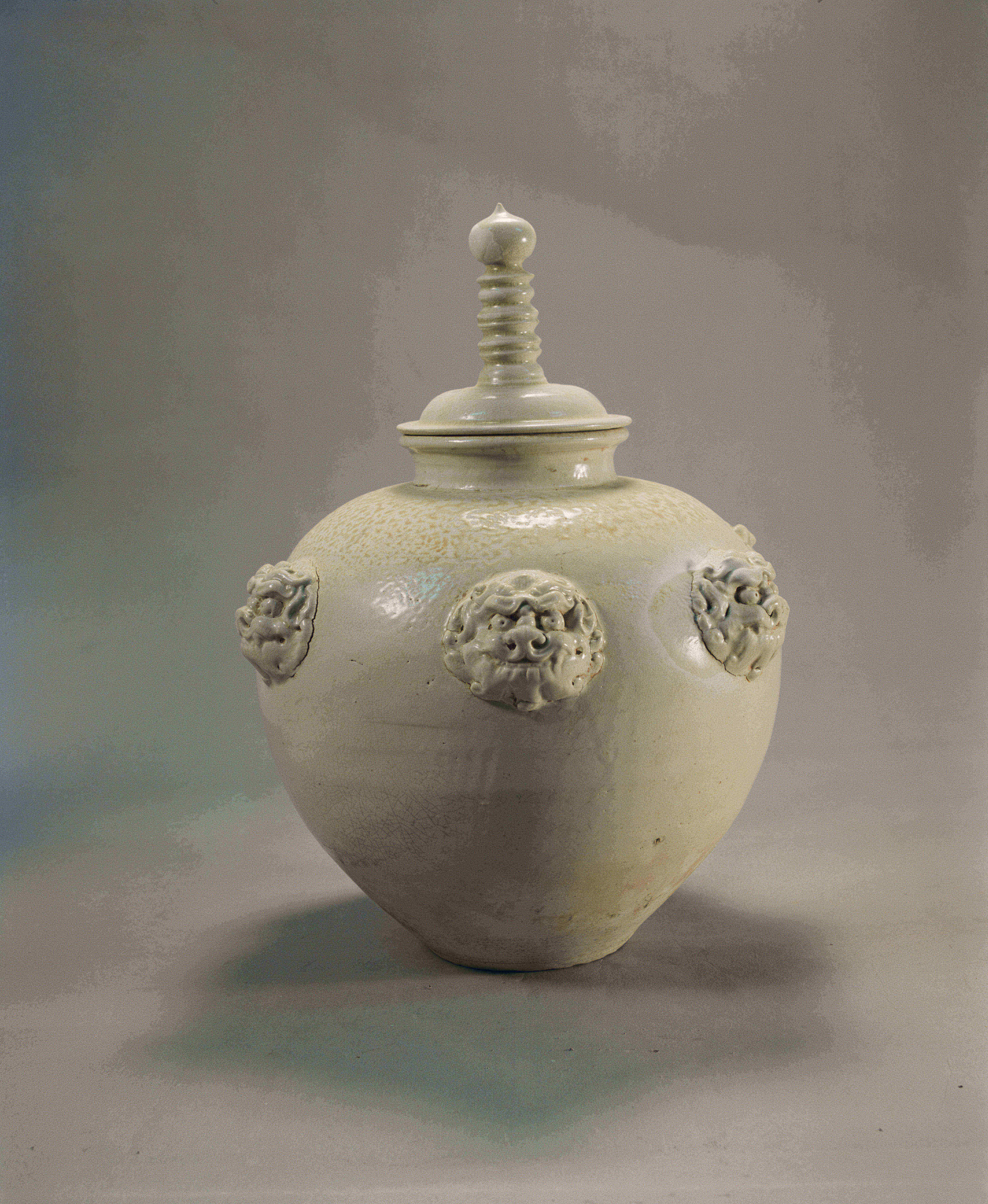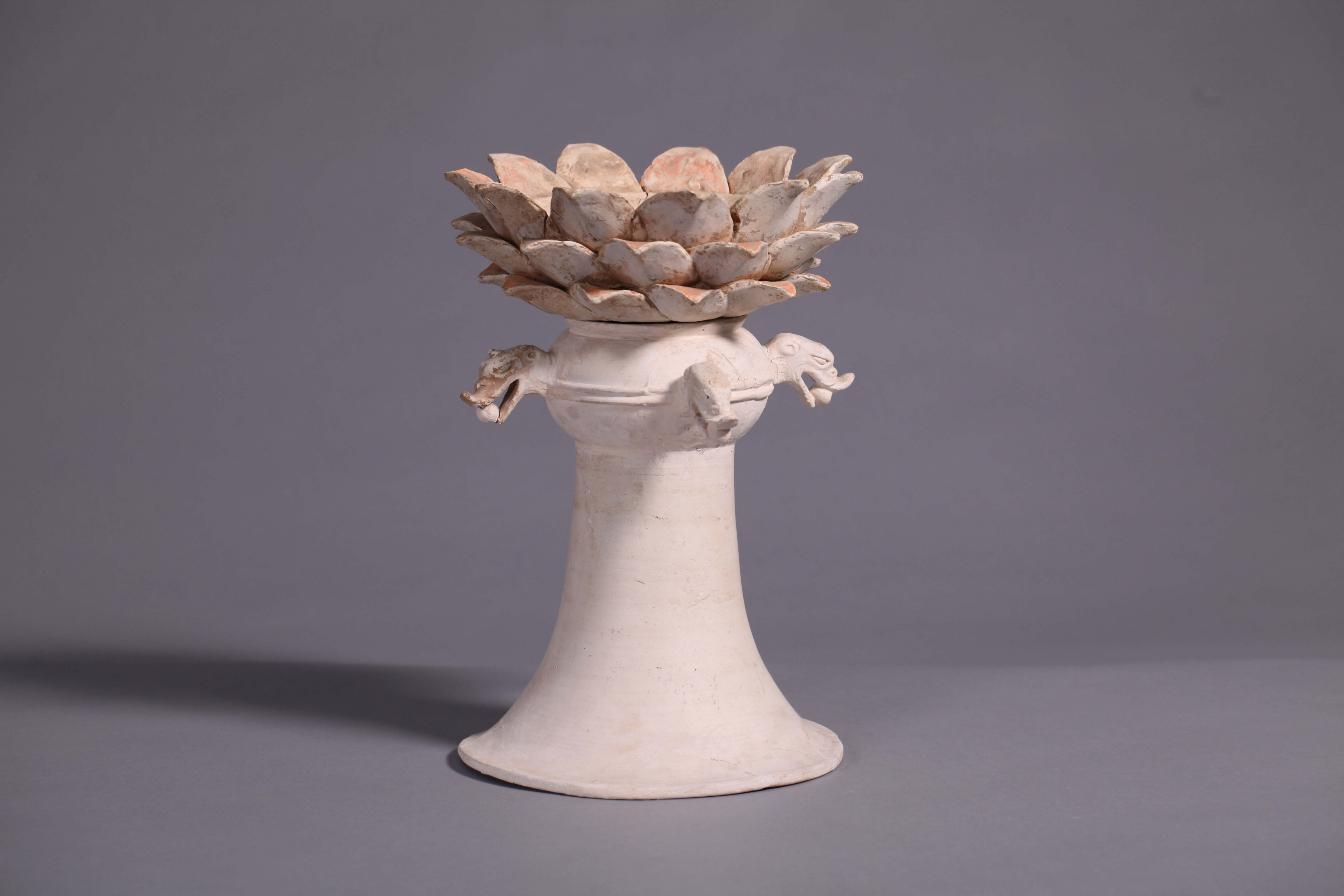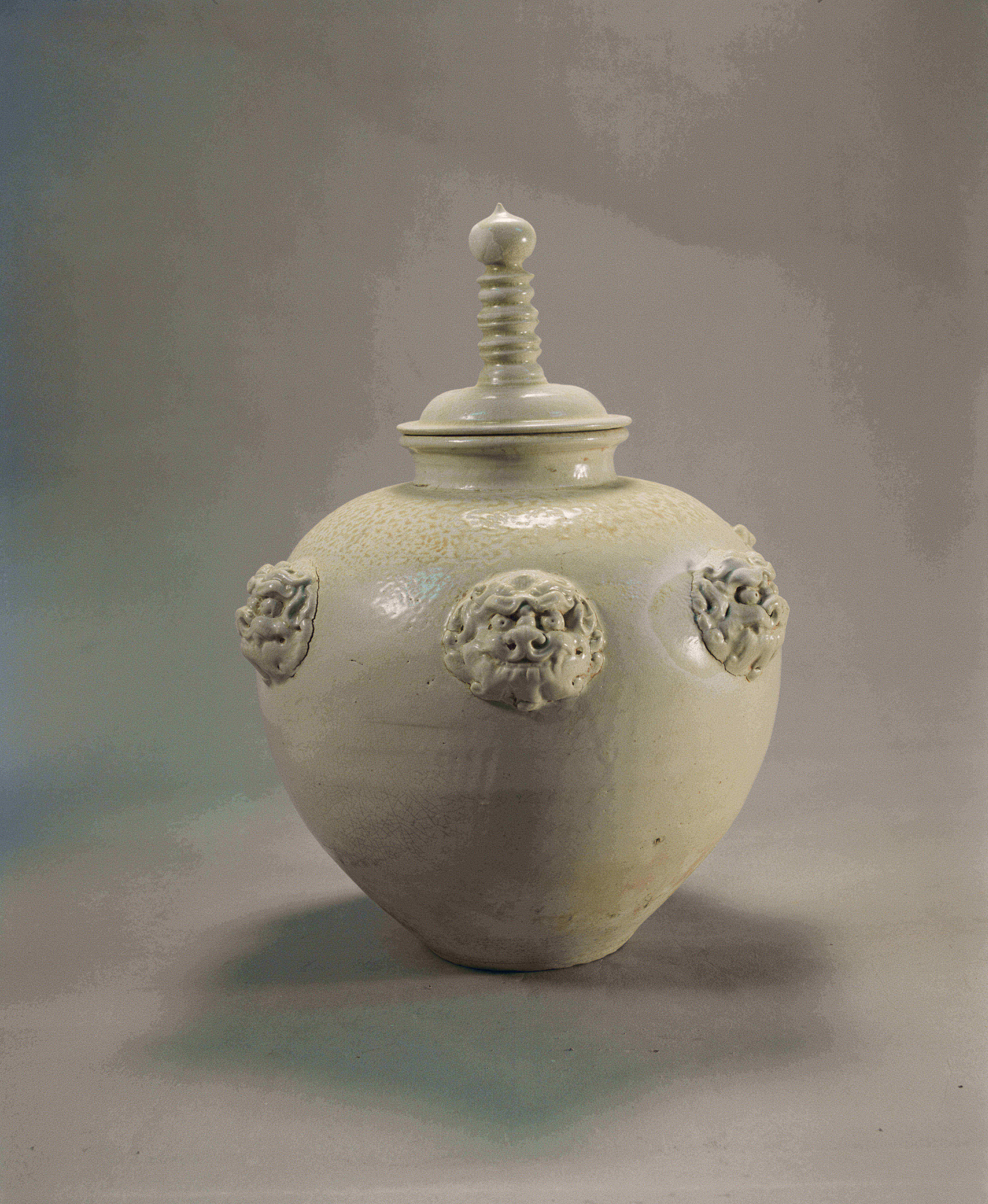

Date: Tang Dynasty (618-907)
Provenance: Unearthed from a tomb in Gongyi, Henan province, 1993
Measurements: Full height (the jar on the pedestal): 76 cm
The pagoda-style jar, also known as tower-shaped jar or jar with the pedestal, is a distinctive burial item with Buddhist characteristics that emerged during the Tang Dynasty. It is composed of three parts from top to bottom: the upper part has a raised lid with a knob resembling a towering four-tiered stupa finial; the middle part, a round-bellied, flat-bottomed jar with six mighty lion heads evenly attached; and the lower part, a pedestal supporting the jar. The flared pedestal is sculpted with four dragon heads bearing precious orbs in their mouths and a three-tiered lotus-shaped top with 11 petals on each layer, totaling 33 lotus petals. Originally decorated with red pigments, most of the color has since worn off.
The pagoda-style jar originated in the early Tang Dynasty, imitating the shape of a pagoda with a simple and unadorned design. It flourished in the high Tang era, evolving into a common style for burial with elongated, harmonized forms, diverse types, and elaborate decorations, showcasing strong artistic characteristics. During the mid-Tang, porcelain pagoda-style jars became more prevalent, with the jar's body gradually lengthening while the base became shorter, with the decoration gradually moving towards simplicity. In the late Tang Dynasty, pagoda-style jars were mostly found in Hebei province and the Inner Mongolia region, featuring a rich local flavor in their design. Subsequently, pagoda-style jars completely disappeared in the Central Plain and Hebei.

